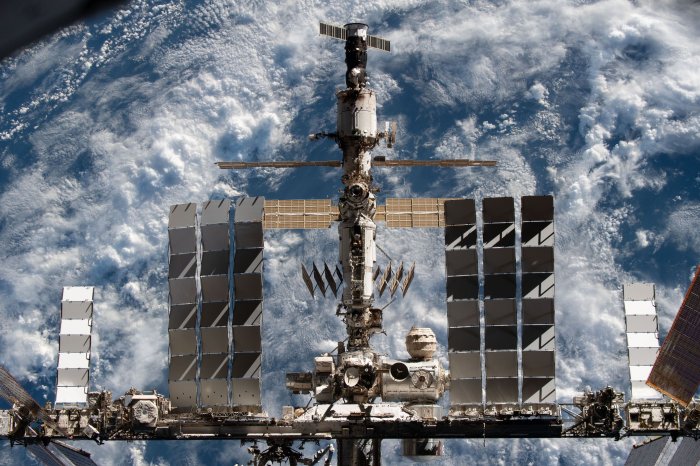Waves of cold air and wintry precipitation across much of the United States may have dissuaded some folks from enjoying the night sky throughout January, but a variety of astronomical sights in February may entice people to bundle up and spend some time outside during the final month of meteorological winter.
Groundhog Day is one of the biggest meteorological holidays of the entire year, but it does have some roots in astronomy.
The annual celebration, which takes place on Feb. 2, falls almost exactly halfway between the winter solstice on Dec. 21 and the vernal equinox on March 20.
Even if Punxsutawney Phil calls for an early spring, stargazers will still have plenty of time to see wintertime constellations and the brightest stars in the night sky before they vanish during the summer months.
Here are the biggest astronomy events to look for in the night sky throughout February:
1. How to spot the 'Dog Star,' Orion and a famous star cluster When: All monthFebruary is the final month of meteorological winter, which runs from Dec. 1 until March 1.
This makes it a great month to look for stars and constellations that are prominent during the winter months, but are not visible during the short but mild summer nights.
Orion is one of the more popular constellations, along with the trio of stars that align to form Orion's belt, and will be visible every night throughout the month as long as the weather cooperates.
It will appear in the southeastern sky right after nightfall and will be visible until it sets around 3 a.m. local time.
Sirius, also known as the "Dog Star," will be shining in the same area of the sky just below and to the left of Orion.
This single star may stand out more than the entire constellation of Orion, as Sirius is the brightest star in the night sky.
 |
| The constellation Orion, at top center, pictured above Sirius, the "Dog Star," at bottom left. Photo courtesy of Accuweather |
As the night transpires and Orion shifts across the sky, it may appear to be following a grouping of stars known as the Pleiades star cluster.
This bunching of stars may be more difficult to spot than Sirius or Orion, especially in light-polluted areas, but Orion's belt can help point stargazers in the right direction. By picturing an imaginary line going through Orion's belt from left to right, it will continue on to nearly intercept the Pleiades, which are not far away.
The Pleiades are also known as the Seven Sisters, although the cluster is comprised of more than seven stars. Onlookers in towns and cities may not be able to see many stars at all, but the farther people are from light-polluted areas, the more stars will be visible in the cluster.
 |
| The Pleiades Star Cluster as seen by the Hubble Space Telescope. Photo by NASA, ESA, AURA, Caltech, Palomar Observatory/Accuweather |
As the Earth orbits around the sun, Sirius, Orion and the Pleiades eventually appear in the same area of the sky as the sun, which is why they cannot be seen during the summer. However, the trio will return to the night sky again in the fall.
2. Mercury before sunrise When: Feb. 16The closest planet to the sun is the most elusive to spot, but early risers around the middle of the month will have the opportunity to see Mercury right before sunrise.
Mercury is only able to be seen for a brief window once every few weeks when, from the perspective of the Earth, it appears at its farthest point away from the sun. During the rest of its orbit, it's either too close to the sun or hidden behind the star at the center of our solar system.
The best morning to see Mercury will be on Feb. 16 about 45 to 60 minutes before sunrise. The tiny planet will be very low in the southeastern horizon, below and to the left of Venus and Mars, which will also be shining in the pre-dawn sky.
The next opportunity to spot elusive Mercury will be in the evening sky during the final days of April and the start of May.
3. Snow Moon When: Feb. 16The middle of the month will not only feature views of Mercury but also a weather-themed full moon.
Full moons have been given various nicknames over the years due to the time of year in which they rise. February's full moon is no exception, taking on the nickname of the Snow Moon due to the snowstorms that typically hit North America throughout the month.
Other nicknames for February's full moon include the Groundhog Moon, the Hungry Moon, the Bald Eagle Moon and the Raccoon Moon.
The full Snow Moon can be seen rising on the evening of Feb. 16 and will shine all throughout the long winter night.
https://news.google.com/__i/rss/rd/articles/CBMiV2h0dHBzOi8vd3d3LnVwaS5jb20vU2NpZW5jZV9OZXdzLzIwMjIvMDIvMDEvYXN0cm9ub215LXNpZ2h0cy1pbi1mZWJydWFyeS80OTIxNjQzNzUwMzExL9IBAA?oc=5
2022-02-01 21:42:14Z
1268868640

Tidak ada komentar:
Posting Komentar